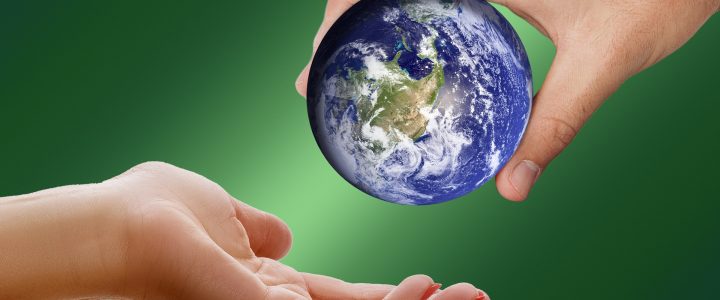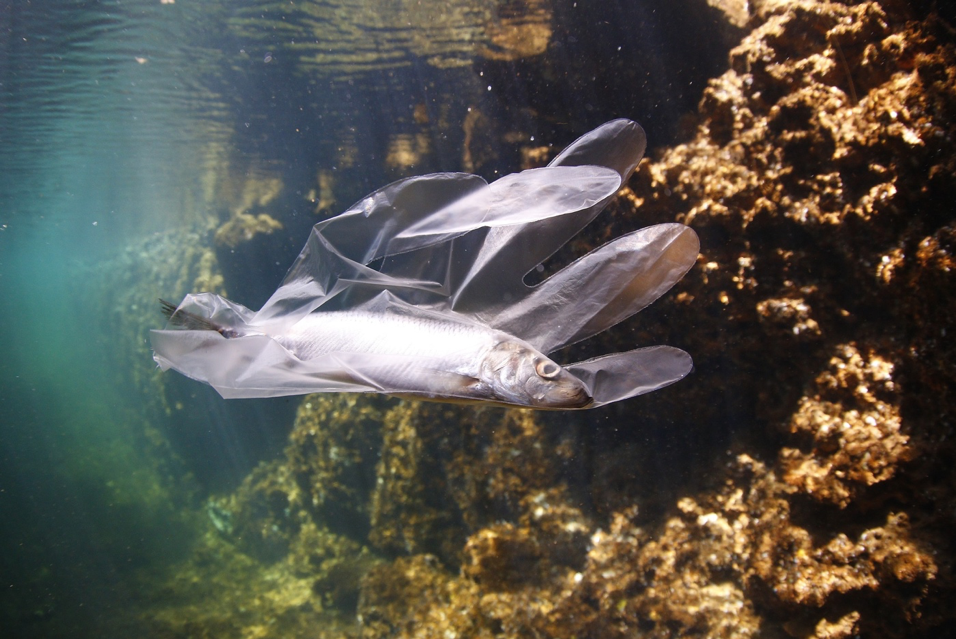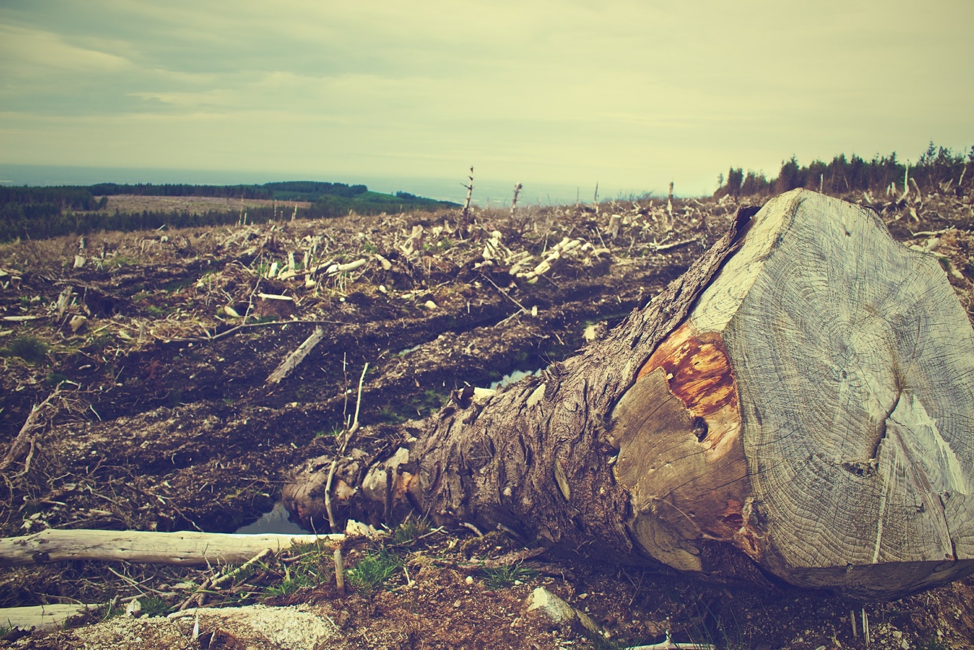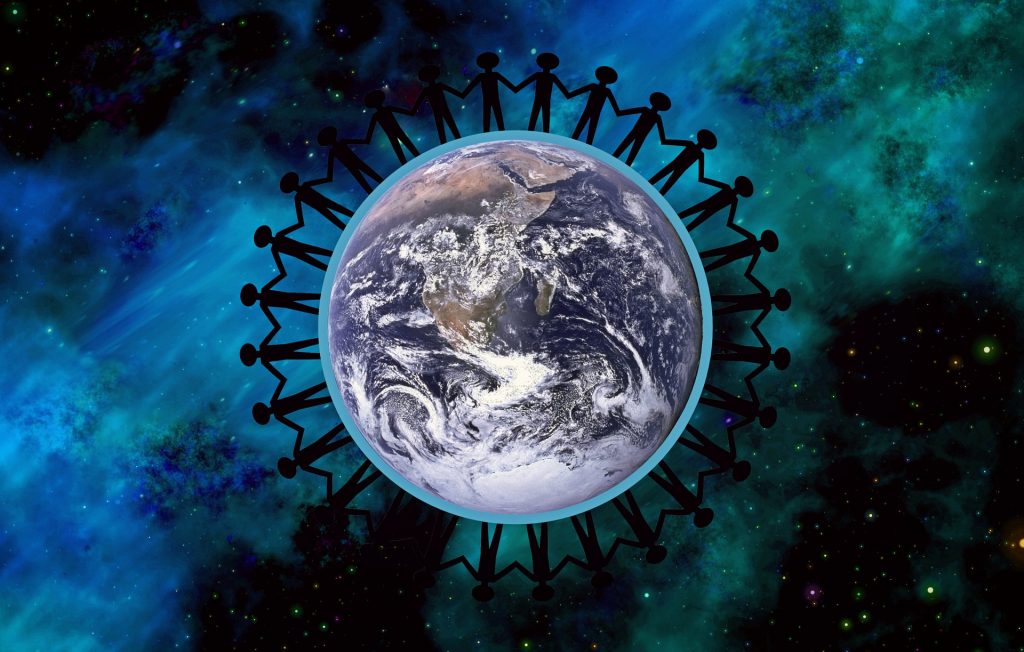
The United Nations calls the 2030 Agenda and the Sustainable Development Goals, “the plan of action for people, planet, and prosperity.”
Together. For all of us.
There’s no doubt this plan with its ambitious list of 17 goals seems daunting. How can we possibly work together as a global force when many of our home countries are facing their own internal struggles and turmoil? How can we come together when we speak different languages, practice different religions, believe in different things? How can we work together on the same goal when we are all so different?
By focusing on what makes us the same.
We are all human, and ultimately, we all want the same things. We want to survive. We want to thrive. We want food and clean water. We want shelter. We want to feel safe. We want to raise our children in safe environments. We want our children and grandchildren and so on to have these things when we are gone. We want to feel good about our work and our place in society.
We want to be happy.
That is what the 2030 Agenda and the Sustainable Development Goals are about – what makes us human and how we can build a future in the world with care and compassion for each other, and care and compassion for the Earth on which we live.
Today, we’ll talk about the last of the SDGs on the list, and share some more ideas on how you can get started RIGHT NOW on working towards a sustainable future.
Sustainable Development Goal #13: Climate Action
Climate change is a global challenge that affects everyone, everywhere.
There’s no getting around it. We all live on the same planet. One country’s emissions damage the climate of the whole Earth. One country’s forest fire is the smoke in another country’s sky.
These are facts. Countries are not self-contained units or closed environments. There is a global biofeedback response to everything every country does.
Unfortunately, conversely, a single country acting alone cannot stop the tide of global climate change. Putting out the fire in one back yard will not stop the rest of the neighborhood from burning down.
We could not possibly be anymore all in this together. So, we need to start acting like it.
Goal #13 Targets include:
-Strengthening resilience and adaptive capacity to climate-related hazards and natural disasters in all countries.
-Integrating climate change measures into national policies, strategies, and planning.
-Improving education, awareness-raising, and human and institutional capacity on climate change mitigation, adaptation, impact reduction, and early warning.

Sustainable Development Goal #14: Life Below Water
Careful management of this essential global resource is a key feature of a sustainable future.
The waters of the Earth are home to an unbelievable diversity of life, much of it yet undiscovered by humans, and much of it rendered undiscoverable if we do not take drastic action to protect it. According to Ocean Conservancy, every year, an estimated “8 million metric tons of plastics enter our ocean on top of the estimated 150 million metric tons that currently circulate our marine environments.”
The impact of all this plastic on marine ecosystems is undeniable. Coral reefs are dying and plastic has been found inside of sea creatures that have mistakenly ingested it as food.
Goal #14 Targets include:
-Preventing and significantly reducing marine pollution of all kinds, in particular from land-based activities, including marine debris and nutrient pollution.
-Sustainably managing and protecting marine and coastal ecosystems to avoid significant adverse impacts, including by strengthening their resilience, and taking action for their restoration in order to achieve healthy and productive oceans.
-Minimizing and addressing the impacts of ocean acidification, including through enhanced scientific cooperation at all levels.
-Regulating harvesting and ending overfishing, illegal, unreported and unregulated fishing, and destructive fishing practices; and implementing science-based management plans, in order to restore fish stocks in the shortest time feasible, at least to levels that can produce maximum sustainable yield as determined by their biological characteristics.
-Conserving at least 10 per cent of coastal and marine areas.
-Prohibiting certain forms of fisheries subsidies which contribute to overcapacity and overfishing, eliminating subsidies that contribute to illegal, unreported, and unregulated fishing and refraining from introducing new such subsidies, recognizing that appropriate and effective special and differential treatment for developing and least developed countries should be an integral part of the World Trade Organization fisheries subsidies negotiation.
-Increasing the economic benefits to Small Island developing States and least developed countries from the sustainable use of marine resources, including through sustainable management of fisheries, aquaculture, and tourism.

Sustainable Development Goal #15: Life on Land
Sustainably manage forests, combat desertification, halt and reverse land degradation, halt biodiversity loss.
According to the Food and Agriculture Organization of the United Nations, “Forests act as a source of food, medicine and fuel for more than a billion people. In addition to helping to respond to climate change and protect soils and water, forests hold more than three-quarters of the world’s terrestrial biodiversity, provide many products and services that contribute to socio-economic development and are particularly important for hundreds of millions of people in rural areas, including many of the world’s poorest.”
It is imperative that we do all that we can to conserve and restore our world’s forests.
Goal #15 Targets include:
-Ensuring the conservation, restoration and sustainable use of terrestrial and inland freshwater ecosystems and their services, in particular forests, wetlands, mountains, and drylands.
-Promoting the implementation of sustainable management of all types of forests, halting deforestation, restoring degraded forests, and substantially increasing afforestation and reforestation globally.
-Combatting desertification, restoring degraded land and soil, including land affected by desertification, drought and floods, and striving to achieve a land degradation-neutral world.
-Ensuring the conservation of mountain ecosystems, including their biodiversity, in order to enhance their capacity to provide benefits that are essential for sustainable development.
-Reducing the degradation of natural habitats, halting the loss of biodiversity and, by 2020, protecting and preventing the extinction of threatened species.
-Promoting fair and equitable sharing of the benefits arising from the utilization of genetic resources and promote appropriate access to such resources.
-Taking urgent action to end poaching and trafficking of protected species of flora and fauna and addressing both demand and supply of illegal wildlife products.
-Introducing measures to prevent the introduction and significantly reducing the impact of invasive alien species on land and water ecosystems and controlling or eradicating the priority species.
-Integrating ecosystem and biodiversity values into national and local planning, development processes, poverty reduction strategies and accounts.

Sustainable Development Goal #16: Peace, Justice, and Strong Institutions
Access to justice for all, and building effective, accountable institutions at all levels.
We cannot tackle the global issues of sustainable development living in societies of fear and violence. How can a person possibly tackle anything outside themselves if daily life comes with the constant fear of death? Peaceful and inclusive societies essentially provide the headspace for thinking globally.
Goal #16 Targets include:
-Reducing all forms of violence and related death rates everywhere.
-Ending abuse, exploitation, trafficking, and all forms of violence against and torture of children.
-Promoting the rule of law at the national and international levels and ensuring equal access to justice for all.
-Reducing illicit financial and arms flows, strengthening the recovery and return of stolen assets, and combating all forms of organized crime.
-Reducing corruption and bribery in all their forms.

-Developing effective, accountable, and transparent institutions at all levels.
-Ensuring responsive, inclusive, participatory, and representative decision-making at all levels.
-Broadening and strengthening the participation of developing countries in the institutions of global governance.
-Providing legal identity for all, including birth registration.
-Ensuring public access to information and protecting fundamental freedoms, in accordance with national legislation and international agreements.
Sustainable Development Goal #17: Partnerships
Revitalize the global partnership for sustainable development.
This is a big one because this one is about money. This one is about resources. This one is about those that have and those that do not, and somehow working it all out for the benefit of all of us.
Goal #17 Targets include:
-Strengthening domestic resource mobilization, including through international support to developing countries, to improve domestic capacity for tax and other revenue collection
–Developed countries implementing fully their official development assistance commitments to developing countries and mobilizing additional financial resources.
–Assisting developing countries in attaining long-term debt sustainability, and adopting and implementing investment promotion regimes for least developed countries
-Enhancing access to science, technology, and innovation and enhancing knowledge sharing globally.

-Promoting the development, transfer, dissemination, and diffusion of environmentally sound technologies to developing countries.
-Promoting a universal, rules-based, open, non-discriminatory, and equitable multilateral trading system under the World Trade Organization.
-Increasing the exports of developing countries.
–Enhancing global macroeconomic stability, including through policy coordination and policy coherence.
-Enhancing policy coherence for sustainable development.
-Respecting each country’s policy space and leadership to establish and implement policies for poverty eradication and sustainable development.
What Can You Do to Help?
What we eat and consequently what we waste have huge implications for the climate of our planet. Deforestation to create land for agriculture, along with a growing demand for meat, are major contributors of greenhouse gases to the atmosphere. The simplest thing to do in your daily life? Eat less meat.
The textile industry is another major contributor of greenhouse gases – around 10% of total emissions worldwide. And 20% of global waste water. What can you do? Upcycle old looks to make new ones, and donate clothes you do not want rather than throwing them away.
Buy sustainable products and buy locally when possible, and do your best to avoid plastic in any form. Reusable totes for the grocery store along with reusable mesh bags for produce are a fantastic (and easy!) way to cut out plastic bags from your daily life.
The state of recycling in the world is not ideal, but that’s no reason to give up! Refuse, reduce, reuse, and recycle!
Plant a tree. Or purchase from companies that will do it for you! There are many businesses in the world today that have made environmental initiatives a hallmark of their brands.
Plant literally anything. Even keeping houseplants has been show to improve the air quality in your home.
And as always, participate in your community. Vote for leaders who believe in a sustainable world and are willing to fight for it. Call out discrimination, sexism, or bullying when you see it. Get involved!
The 2030 Agenda and the Sustainable Development Goals are our collective response to building a fair globalization.
-António Guterres, United Nations Secretary-General
Thank you for hanging in there with us, swrmers! We can do this together!




